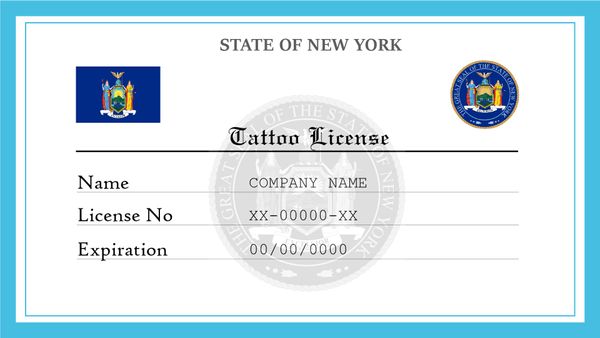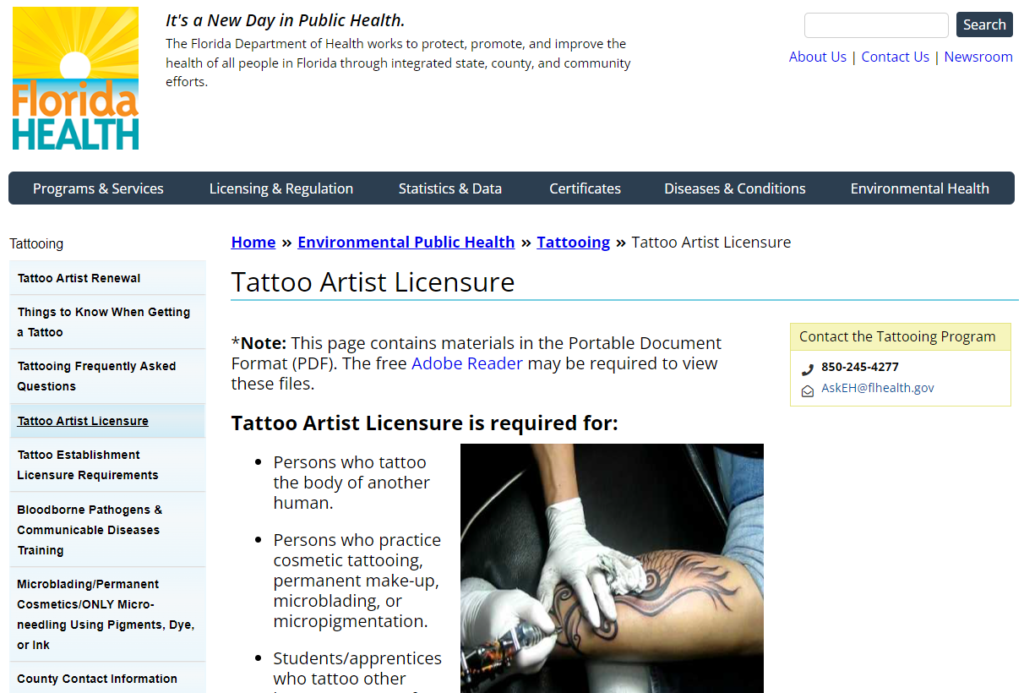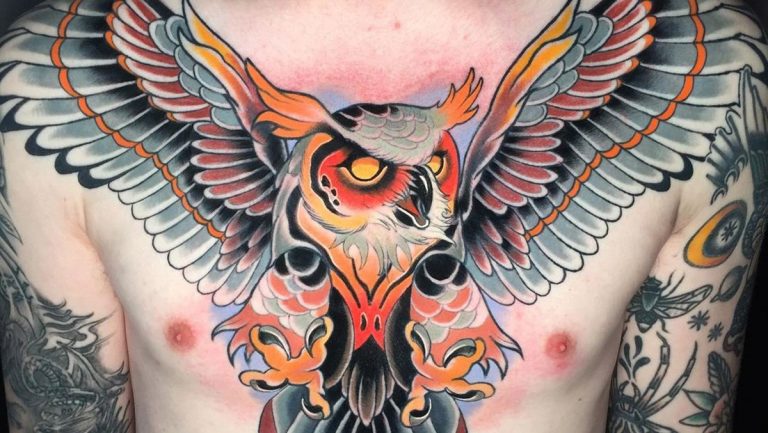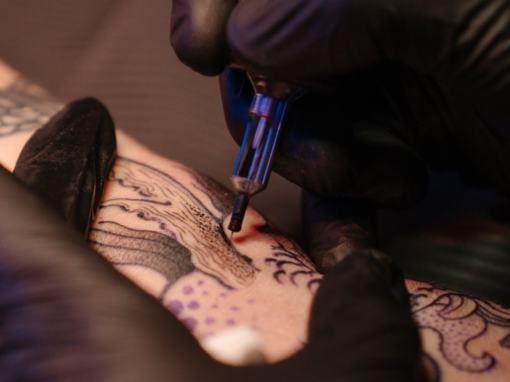How to get your first tattoo license? This question can be intimidating for many aspiring tattoo artists. We understand how difficult it is to deal with all these documents and not get confused by the requirements of different states. With our handy step-by-step guide, you’ll feel it’s not as hard as it seems.
If you’re just starting on your journey into the profession, you probably want to know all the details of getting your first license and how much it might cost. For more experienced tattoo artists, we have tips on renewing your license and even changing it when you relocate.
What Is a Tattoo License, and Why Do You Need It?
Getting a tattoo license is an important step in turning your passion for the art into a real profession. To put it simply, a tattoo license is a legal permit issued by a state or local government that allows a person to practice tattooing professionally.
Also, in some states, you may come across terms like “body art permit” or “tattoo technician registration”, which means the same thing.

An example of a New York tattoo license.
Source: newyork.licenselookup.org
But why do tattoo artists need a license? We can compare it to other professional licenses like doctors or lawyers firstly, it serves as proof that you have met the necessary health and safety standards for your clients. Tattooing without a license can lead to serious legal problems and even a year in jail, but the consequences vary from state to state.
The process for obtaining a tattoo license varies from state to state, for example, some require a person to complete a certain number of hours of training at a licensed tattoo school or apprenticeship program followed by an exam.
At the same time, there are a few states that do not require a license at all. There, tattoo artists should work in licensed parlors that are responsible for their qualifications. However, this does not mean that a tattoo artist does not have to undergo any training, for example bloodborne disease certification is required in all states.

How to Get a Tattoo License: Step-By-Step Guide
Obtaining a tattoo license involves several steps, but it’s important to remember that they can vary from state to state. Our team has researched all the requirements to create a comprehensive guide that will be helpful to everyone. Depending on your local regulations, you may be able to skip some points.
Here is our step-by-step guide to help you navigate the process:
1. Research your state’s requirements
First, it is important to familiarize yourself with the specific requirements set forth by your state’s health department or licensing board. These requirements can vary greatly from state to state and may include criteria such as age restrictions, education or apprenticeship requirements, and medical certifications.
You can usually find specific information on the official website of the state health department. It also lists the fee for obtaining a license and the available ways to apply, online or offline.

Example of a Florida Health website page about tattoo licensing.
Source: floridahealth.gov
2. Complete required training
Once you’ve familiarized yourself with your state’s requirements, the next step is to complete any necessary training and education. In many states, aspiring tattoo artists must receive formal training in tattooing, sanitation, and bloodborne pathogen (BBP) prevention.
Each state sets requirements for the minimum number of training hours completed before aspiring tattoo artists can get a tattoo license. This training can be done at accredited tattoo schools, apprenticeships with experienced tattoo artists, or state-approved educational programs.
In addition, 11 states require you to take cardiopulmonary resuscitation (CPR) and first-aid courses, as these skills are considered to keep your clients safe in critical situations. Some require tattoo artists to be vaccinated against hepatitis, and it’s a great practice to protect clients and artists.
Unfortunately, medical-related certifications cannot be obtained through an apprenticeship, but many resources offer OSHA-approved lectures on bloodborne pathogens. CPR certification can be obtained from the American Heart Association (AHA) or through the American Red Cross.
Speaking of price, getting a certificate typically costs $25-$50 each, while vaccinations will cost you $60-$150 without insurance.

3. Gather required documentation
Now is the time to gather all the paperwork to apply for your license. Here’s a complete list of what you may need, but things may vary from state to state:
- – Proof of training or apprenticeship completion.
- – 2 forms of ID, for example, a passport and a driver’s license. Additionally, a few states will require a high school diploma or General Education Diploma (GED), but this is pretty rare.
- – BBPBloodborne pathogen. certification and vaccination proofs.
- – CPRCardiopulmonary resuscitation. and first-aid certificates.
- – Check or money order for a tattoo license fee, which usually can vary from $60 to $250.
It is important to note that all of your certificates remain up to date.

4. Pass examination or portfolio review
In some states, you may need to pass practical or written examinations to demonstrate your knowledge of tattooing safety protocols. Additionally, examiners may review your portfolio to evaluate your skills and expertise in the craft.
States such as Alabama, Florida, Iowa, Kentucky, Maine, Minnesota, Mississippi, Missouri, Nebraska, Vermont, Washington and Wisconsin usually do not require an exam, but in some cases the state may ask a tattoo artist to demonstrate their portfolio.
Your portfolio may be physical (a scrapbook with photos) or digital (an Instagram page, website, or specialized platform like InkMatch).
Even if you have a practice exam waiting for you, don’t worry about it. The focus will be on maintaining sanitary standards and technical proficiency, not your style, so there is no need to worry that the examiner won’t like your design.
5. Submit the license application form
Once you’ve gathered all the required documents and have got your exam score, submit your license application to the appropriate authority. Each state has its application form for artists who need to get a license, which you can easily find on the official website.
In most cases, you can apply online, although mail-in options might also exist. Pay close attention to any deadlines and ensure that your application is filled out accurately and completely.
6. Await license approval
Congratulations! Now all you have to do is wait for your new license and throw a party to celebrate. Once approved, you will receive a tattoo license, giving you the legal right to practice tattooing in the state that issued the license.
Proudly display your license and certificates at your workplace so that clients are always confident in your qualifications. This requirement of many states allows clients to immediately identify the safety of a tattoo artist, so it’s important to stick to it.

Is It Possible to Get a License Without an Apprenticeship?
For many aspiring tattoo artists, the traditional path to obtaining a tattoo license involves completing an apprenticeship under the guidance of an experienced mentor. But not everyone agrees with this way of doing things, and then the question arises: Is it possible to get a license without going through an apprenticeship? The answer varies depending on the state in which you intend to practice tattooing.
In some states like Kansas and Oregon apprenticeships are mandatory, but on the other hand, there are states where you can get a tattoo license without going through a formal apprenticeship. These include Alabama, Florida, Hawaii, Iowa, Kentucky, Maine, Nebraska, North Carolina, Rhode Island, Washington and Wisconsin.
These alternatives might involve passing written and practical exams or providing a portfolio showcasing your past work. Moreover, an apprenticeship is an invaluable experience, so even in these states, aspiring tattoo artists can complete it if they wish.
Also, regardless of your state’s apprenticeship requirements, bloodborne pathogen and first aid certifications are typically mandatory for licensure.

How to Renew Your License?
Once you have obtained your tattoo license and started your journey as a professional tattoo artist, you need to renew it upon its expiration. Otherwise, a lapsed license can result in fines or suspension.
Each state has its license renewal process, including specific deadlines, fees, and documentation requirements. Some states require tattoo artists to renew their licenses annually, while others require renewal every two or even three years. For example, in Texas, tattoo artists must renew their licenses every two years, and in Florida every year.
To renew your license, you will most often need the same form as you did for registration. Review all of your certifications to make sure they are current, pay the fee, and submit the application. Usually, the license renewal fee is cheaper.

Renewing a License When Moving to Another State
Moving to another state can be exciting and open up new opportunities in your career, but we get your anxiety related to license renewal. Understanding the process is crucial to ensure you continue practicing legally in your new location.
When you move, your tattoo license doesn’t automatically transfer over, so it’s a good idea to update it before you start working in a new location. Depending on the state’s requirements, you may need to provide proof of a current license, pass a background check, and meet any additional requirements set by the licensing board.
To obtain a temporary license, a tattoo artist needs to meet the same requirements. Usually, this type of license is valid for seven days and is needed for artists to participate in tattoo conventions. If you’re moving from a state that doesn’t require a license, you can expect a grace period during which you can get your license. At the same time, if the new state requires a certain number of apprenticeship hours that you don’t have, you can petition for a waiver because of your experience. In that case, the decision will be made on a case-by-case basis.

States With Rules That Will Surprise You
While many requirements for obtaining a tattoo license are fairly standard, some states have regulations that can catch even experienced tattoo artists off guard.
One such state with surprising rules is Alaska, which has a very interesting license expiration line in addition to the requirement to have at least 380 hours of apprenticeship. In Alaska, you have to renew your license on August 31st of every odd-numbered year, so you’ll have to keep a close eye on the calendar to make sure you don’t miss it.
At the same time, Oregon is considered one of the strictest states, as every tattoo artist there is required to complete Oregon-licensed tattooing career school. In addition, aspiring tattoo artists must show a portfolio of 50 designs at the licensing exam.
There are quite a few states where a tattoo artist does not have to be licensed, including Arizona, Delaware, Idaho, Illinois, Indiana, Louisiana, Maryland, except Baltimore City, Michigan, Montana, New Jersey, North Dakota, South Carolina, Texas, West Virginia and Wyoming. In these states, tattoo parlors must be licensed, and it is they who guarantee the professionalism of the tattoo artists they work with.
Some states do not have a common regulation, such as California, Colorado, Georgia, Massachusetts, New York, Ohio, Pennsylvania, South Dakota and Tennessee, who delegate some tattoo licensing regulations to individual counties. This can lead to a lot of confusion among tattoo artists because no one expects that the rules can change even within the same state.

Summary
Obtaining a tattoo license is an important step that marks the beginning of your independent journey as a tattoo artist involves a combination of education, training, and compliance with state regulations.
By following the steps outlined in this guide and being aware of your state’s requirements, aspiring tattoo artists can set themselves on the path to a successful and fulfilling career in the industry.
The InkMatch team wishes you a successful career in the tattoo industry!
FAQ
? What Is the Easiest State to Get a Tattoo License In?
One of the easiest states to get a license is considered to be Florida. Although you still need to complete a training course there, the application fee is only $60. Hawaii is also an easy state to get a license, where you only need to get a BBP certificate, have a few vaccinations, and pass an exam.
?? How to Become a Licensed Tattoo Artist?
To become a licensed tattoo artist, individuals must fulfill their state’s requirements, which typically include training, certifications, and passing examinations or portfolio reviews.
? What Do You Need to Tattoo Legally?
To tattoo legally, you’ll need a valid tattoo license issued by your state, as well as any required certifications in bloodborne pathogens prevention, first aid, and CPR.
? How to Get a Tattoo License Without Apprenticeship?
While apprenticeships are common, some states may offer alternative ways. Ensure that you meet all other requirements set forth by your state, including vaccinations and certifications.
⏳ How Long Does It Take to Get Your Tattoo License?
The timeframe for obtaining a tattoo license can vary depending on factors such as the number of training hours required, application processing time, and required exams. Generally, the process can take anywhere from a few weeks to a few months, not including time for apprenticeship.





